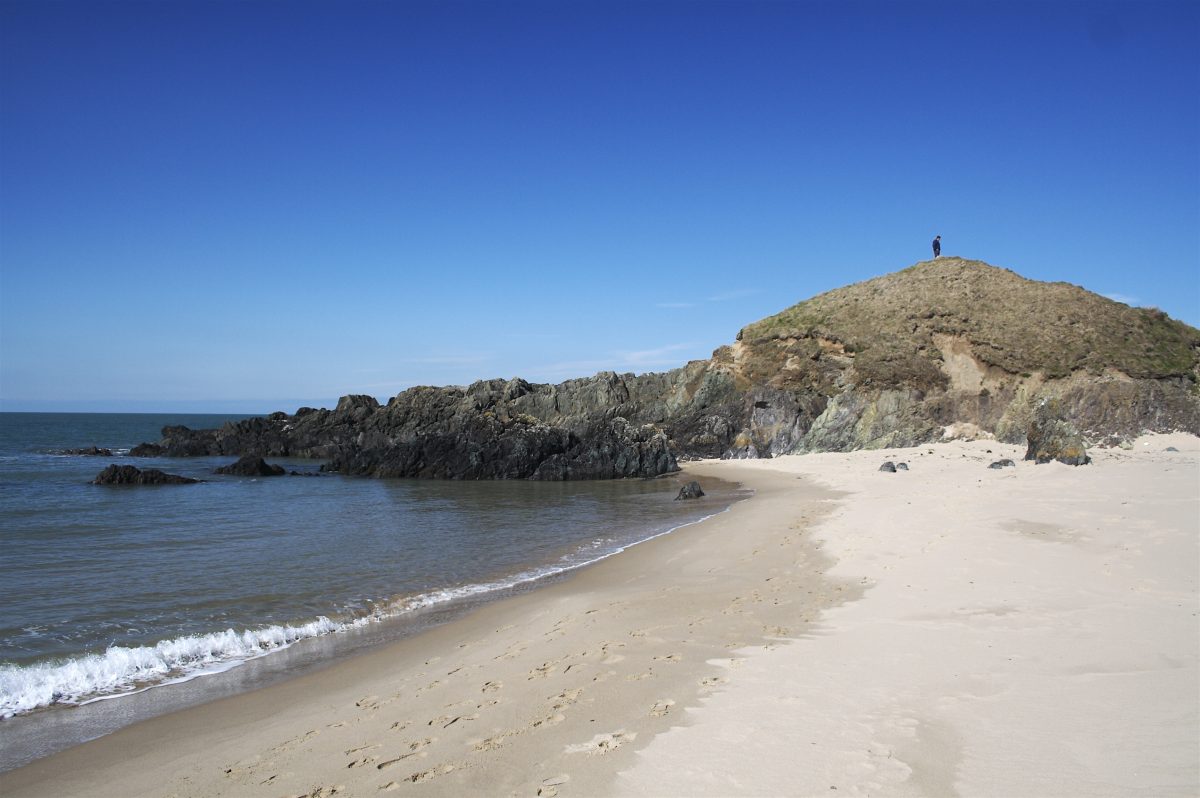The beach at Porthor is known as the Whistling Sands, which in many ways is an odd name because squeaking sands would be more appropriate. As you walk along the beach the sand squeaks underfoot. I experienced a similar phenomena on Whitehaven Beach, Whitsundays, Australia beach and it’s distinctly odd.
One suggestion is that the sound is caused by friction as the grains rub against each other, but this isn’t proven. What is known is that you need the right sort of sand grains: ones that are near spherical with no sharp edges. This is probably why the effect is only heard on some beaches. The squeaking is most audible when the sand has been recently washed, and so it’s rarely heard far from the shoreline. On the beech, the sand needs to be dry (although submerged sand can also sometimes squeak) [2] so check the weather before travelling!
Logistics and some suggested locations
Whistling Sands – Porth Oer, Wales
Owned by the National Trust
Whitehaven Beach, Whitsundays, Australia
Can be reached via ferries and other boats.
Other reported sites
Australia
- Pilots beach in Laurieton, NSW
- Thistle Cove, Cape Le Grand National Park
- Neck Beach, Bruny Island, Tasmania
- Moreton Island, Australia
- Surfer’s Paradise, Australia
- Bondi beach, Australia
- Squeaky Beach, 5607, Australia
- Wilson’s Prom., Victoria, Australia
USA
- Cocoa beach, Florida
- Treasure island, Florida
- Henderson Beach Destin, Florida
- Tybee Island, GA, USA
Cources
- Sound Benboncan (c) some rights reserved
- Sholtz, P., Bretz, M., and Nori, F. (1997). “Sound-producing sand avalanches,” Contemporary Physics 38, 329-342.
- Eifion (c) some rights reserved
- map thumbnail.Storm (c) some rights reserved


I can confirm that there are patches of squeaking sand on the beach in Carmel CA. Very fine white sand, which squeaks quite dependably near the high wall at the back of the beach.
I discovered this phenomena at a sand mountain west of Austin, Nevada, USA. When we slid down the dune it caused a reverberation whereby the whole mountain rang like a bell. We thought it had to do with the sand being very dry, but that wouldn’t explain your noisy beach experiences. So it must be the moisture content in addition to the type of sand grain.
The sands in most of the Southeastern parts of the United States should be like this from the age of the original sand (older = more spherical). This is true as long as “new” sand hasn’t been hauled in to replace what has washed away.
I have experienced this effect a few times in Portugal. Mainly in the south coast where the sand appears to be finer.